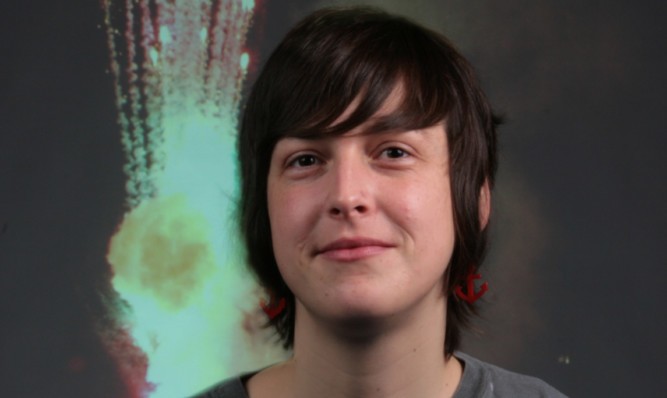The Dundee artist behind a controversial taxpayer-funded art project says her aim is to draw attention to “the economic system”.
But nearly two months into her Glasgow Effect project Ellie Harrison has still refused to clarify how the £15,000 of funding will be spent or what artwork will be produced.
The artist and lecturer received a grant from Creative Scotland to live in Glasgow for a year without leaving the city.
The scheme caused uproar on social media with critics questioning its artistic value, claiming it “exploits poverty” and accusing the artist of “failing to communicate” with the public over their concerns.
The Courier has repeatedly given Ms Harrison the chance to present her point of view.
So far she has declined to answer any of our questions, but said: “One of my key aims is to draw attention to the economic system and the impact it has on each of our individual lives.”
Ms Harrison attempted to explain her project at a public event earlier this month but a fellow artist who attended described the explanation as “waffle”.
In an attempt to shed light on the project, The Courier sent Ms Harrison a list of questions based on the main issues raised by members of the public.
These included what artwork will be produced as part of the project, how the £15,000 will be spent and what the artists’s response is to the public reaction so far.
Ms Harrison said: “Those are all interesting questions, some of which I answered already during the discussion.
“And the others I’m sure will be clarified as the project progresses over the course of the year.”
The Glasgow Effect launched on New Year’s Day.
Described as a “durational performance”, it aims to explore how an artist’s career, social life, family ties, carbon footprint and mental health would be affected by staying within the city’s boundaries.
The project has a blog page where the public can follow its progress but so far no updates, other than the artist’s funding application, have been posted.
She has also stated that she did not want to apply for funding in the first place, but did it to “tick a box” in order to keep her job as a lecturer at Dundee University.What we askedThe following questions were put to artist and lecturer Ellie Harrison in an attempt to clarify the Glasgow Effect:What artwork will be producedduring and/or at the end of this project? How will the findings of the project be presented will there be anexhibition, a research paper, or something else? What exactly will the £15,000 of funding be spent on? Did you expect the project to get such a large, and at times hostile, response and what is your reaction to that? Claims have been made that you’re essentially being paid to take a year off teaching, to do the things younormally do anyway and that this doesn’t deserve funding what would you say to those claims? Glaswegians have expressed anger at the title of the project and the image of chips what would your response to them be?Ms Harrison stated that she had already answered some of thequestions in the February 3 public discussion (included above).
She added that the others she was “sure will be clarified as the project progresses over the course of the year”.
